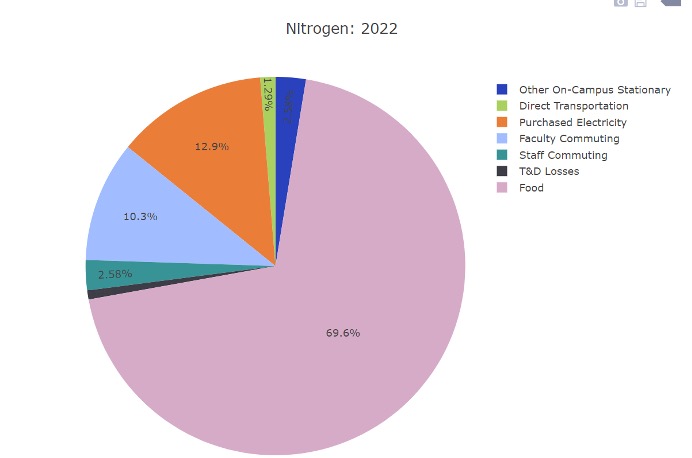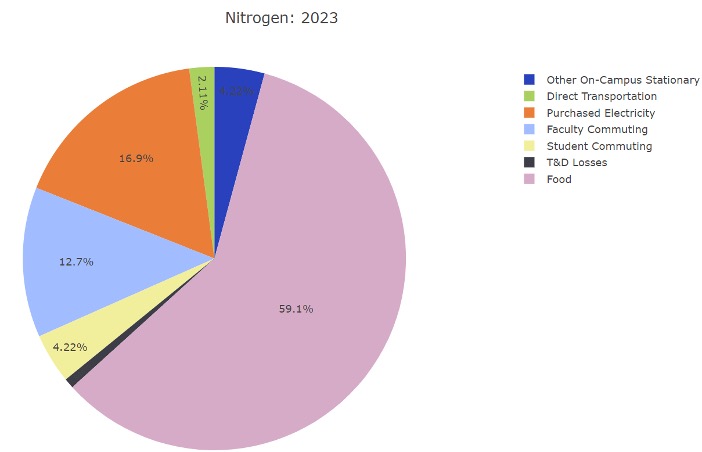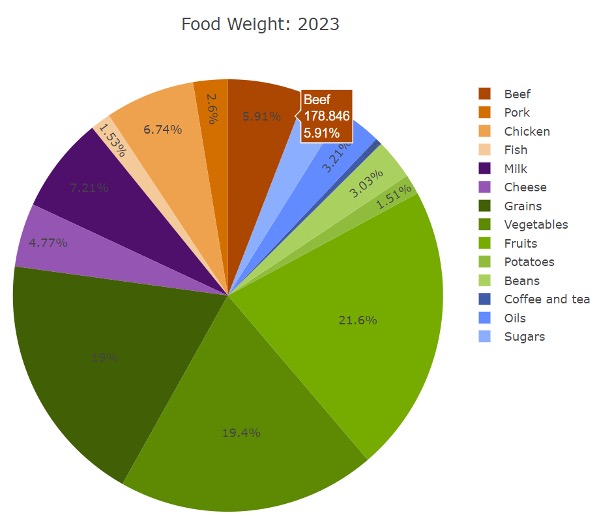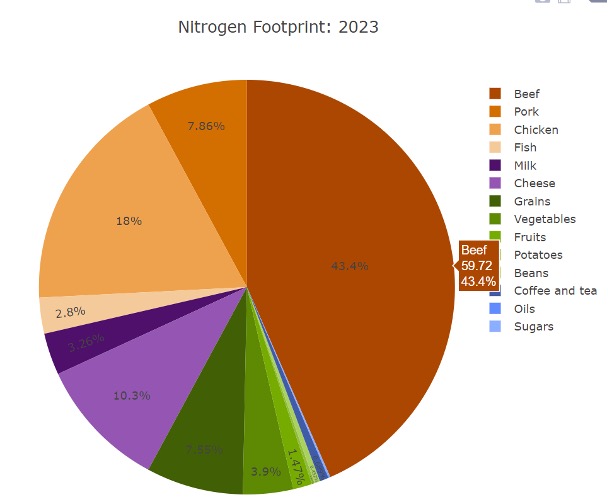NWG at MSL: Nitrogen Footprint Calculation
The Morven project involves an in-depth analysis of its present nitrogen and carbon outputs, with a focus on identifying effective measures to reduce losses to the environment. This process takes a broad look across multiple sectors of Morven’s operations including transportation, fertilizer use, energy, and food. The Morven team receives data from Morven regarding its operations, and the team performs calculations to consolidate the data before inputting them into SIMAP, a tool developed by the University of New Hampshire (UNH) which calculates nitrogen and carbon footprints.
See the makeup of the footprints below:
|
Contributors to MSL Nitrogen Footprint, 2022 |
Contributors to MSL Nitrogen Footprint, 2023 |
Looking at the impact of food on footprint of MSL is particularly interesting. Check out the difference in the amounts of different types of food Morven bought and the impact those had on the nitrogen footprint.
|
Weights of foods purchased in 2023 |
MSL's 2023 food footprint, by food contribution to nitrogen footprint* |



